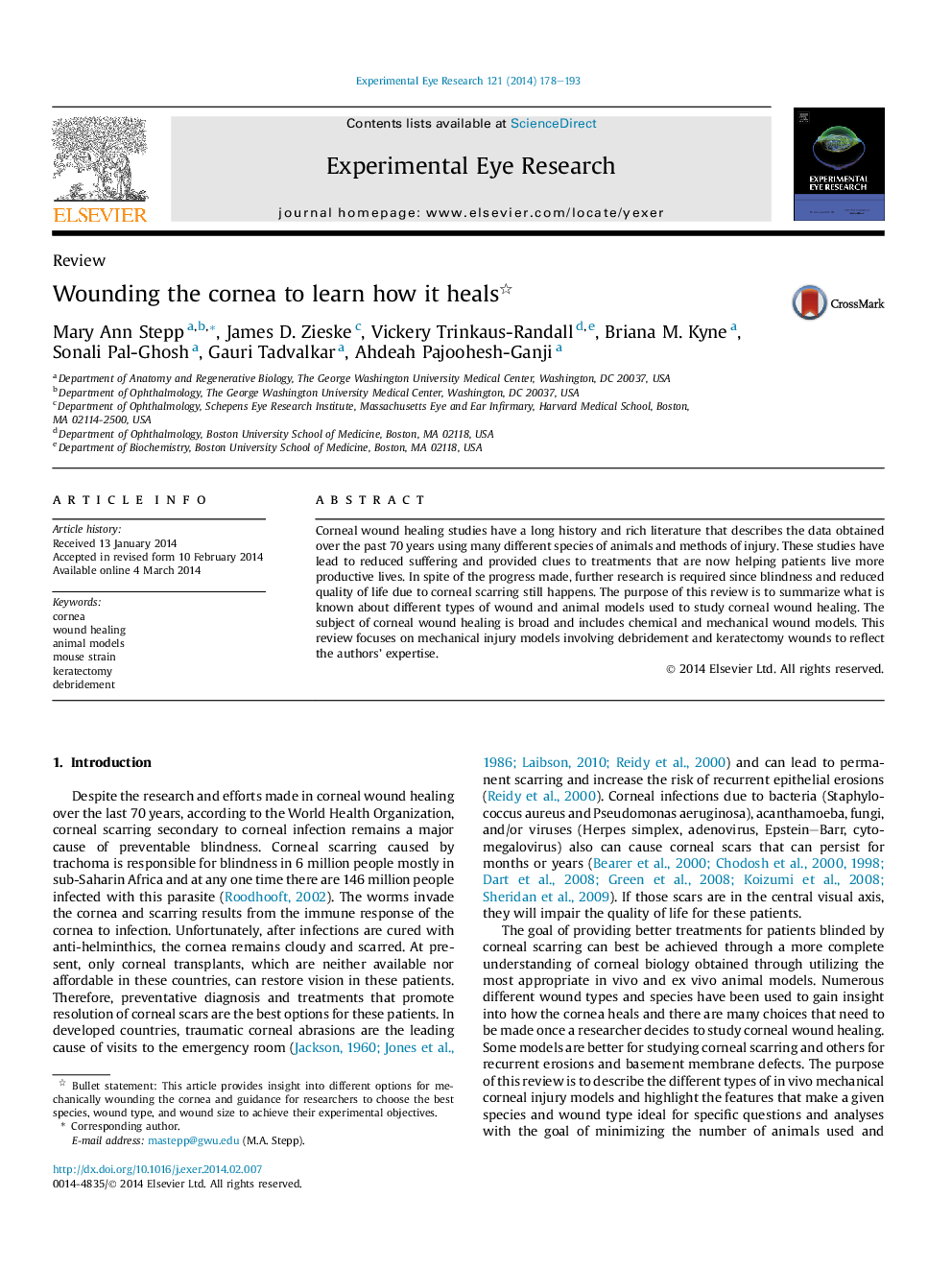| Article ID | Journal | Published Year | Pages | File Type |
|---|---|---|---|---|
| 6197016 | Experimental Eye Research | 2014 | 16 Pages |
â¢Corneal wound healing studies contribute to basic science knowledge.â¢Improved treatments for patients result from corneal wound healing studies.â¢We describe the numerous options for mechanically wounding the cornea.â¢Guidance is provided to help researchers decide which vertebrate cornea to use.â¢Using the mouse to study the cornea offers advantages as well as challenges.
Corneal wound healing studies have a long history and rich literature that describes the data obtained over the past 70 years using many different species of animals and methods of injury. These studies have lead to reduced suffering and provided clues to treatments that are now helping patients live more productive lives. In spite of the progress made, further research is required since blindness and reduced quality of life due to corneal scarring still happens. The purpose of this review is to summarize what is known about different types of wound and animal models used to study corneal wound healing. The subject of corneal wound healing is broad and includes chemical and mechanical wound models. This review focuses on mechanical injury models involving debridement and keratectomy wounds to reflect the authors' expertise.
